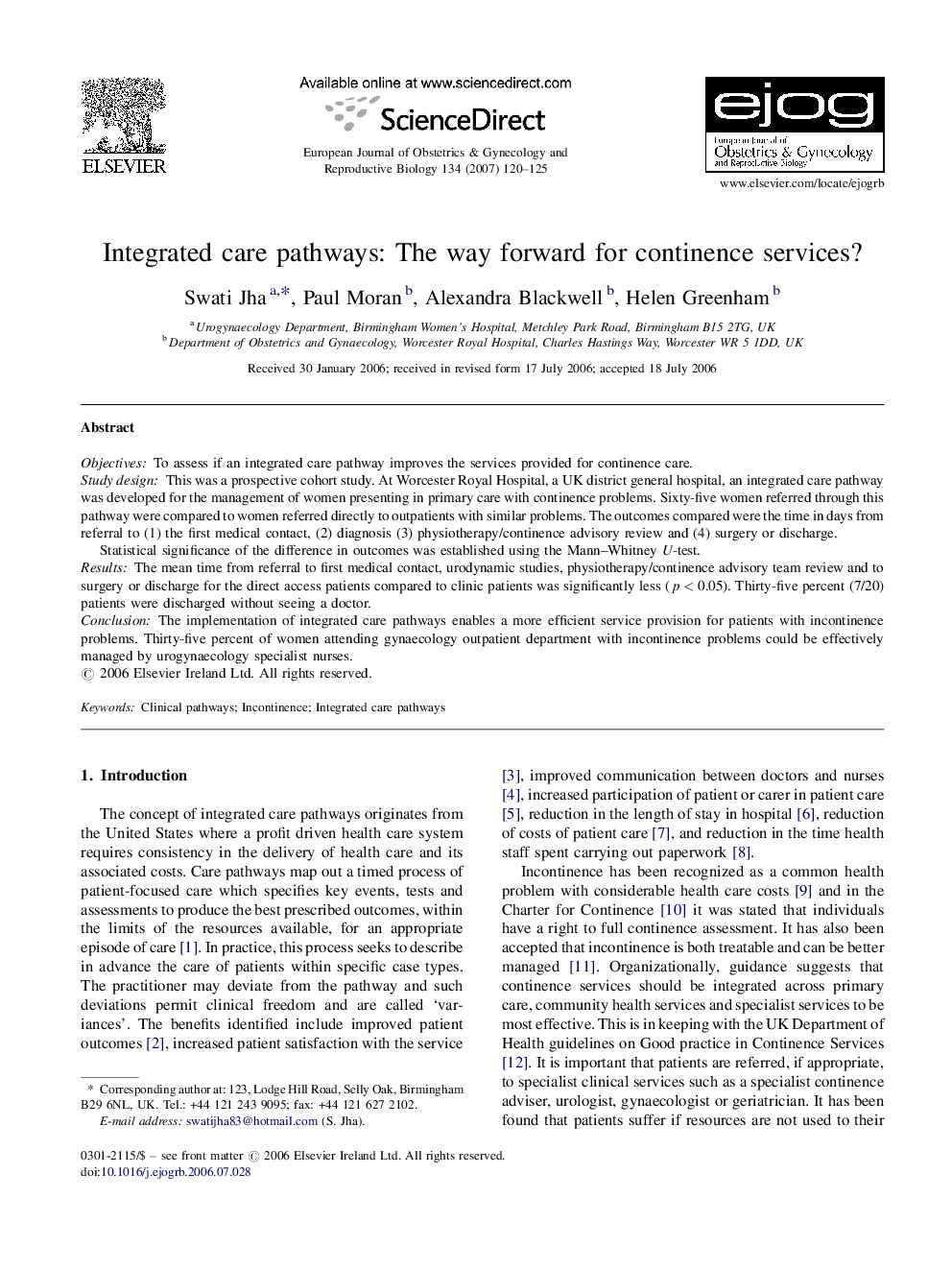| Article ID | Journal | Published Year | Pages | File Type |
|---|---|---|---|---|
| 3922383 | European Journal of Obstetrics & Gynecology and Reproductive Biology | 2007 | 6 Pages |
ObjectivesTo assess if an integrated care pathway improves the services provided for continence care.Study designThis was a prospective cohort study. At Worcester Royal Hospital, a UK district general hospital, an integrated care pathway was developed for the management of women presenting in primary care with continence problems. Sixty-five women referred through this pathway were compared to women referred directly to outpatients with similar problems. The outcomes compared were the time in days from referral to (1) the first medical contact, (2) diagnosis (3) physiotherapy/continence advisory review and (4) surgery or discharge.Statistical significance of the difference in outcomes was established using the Mann–Whitney U-test.ResultsThe mean time from referral to first medical contact, urodynamic studies, physiotherapy/continence advisory team review and to surgery or discharge for the direct access patients compared to clinic patients was significantly less (p < 0.05). Thirty-five percent (7/20) patients were discharged without seeing a doctor.ConclusionThe implementation of integrated care pathways enables a more efficient service provision for patients with incontinence problems. Thirty-five percent of women attending gynaecology outpatient department with incontinence problems could be effectively managed by urogynaecology specialist nurses.
